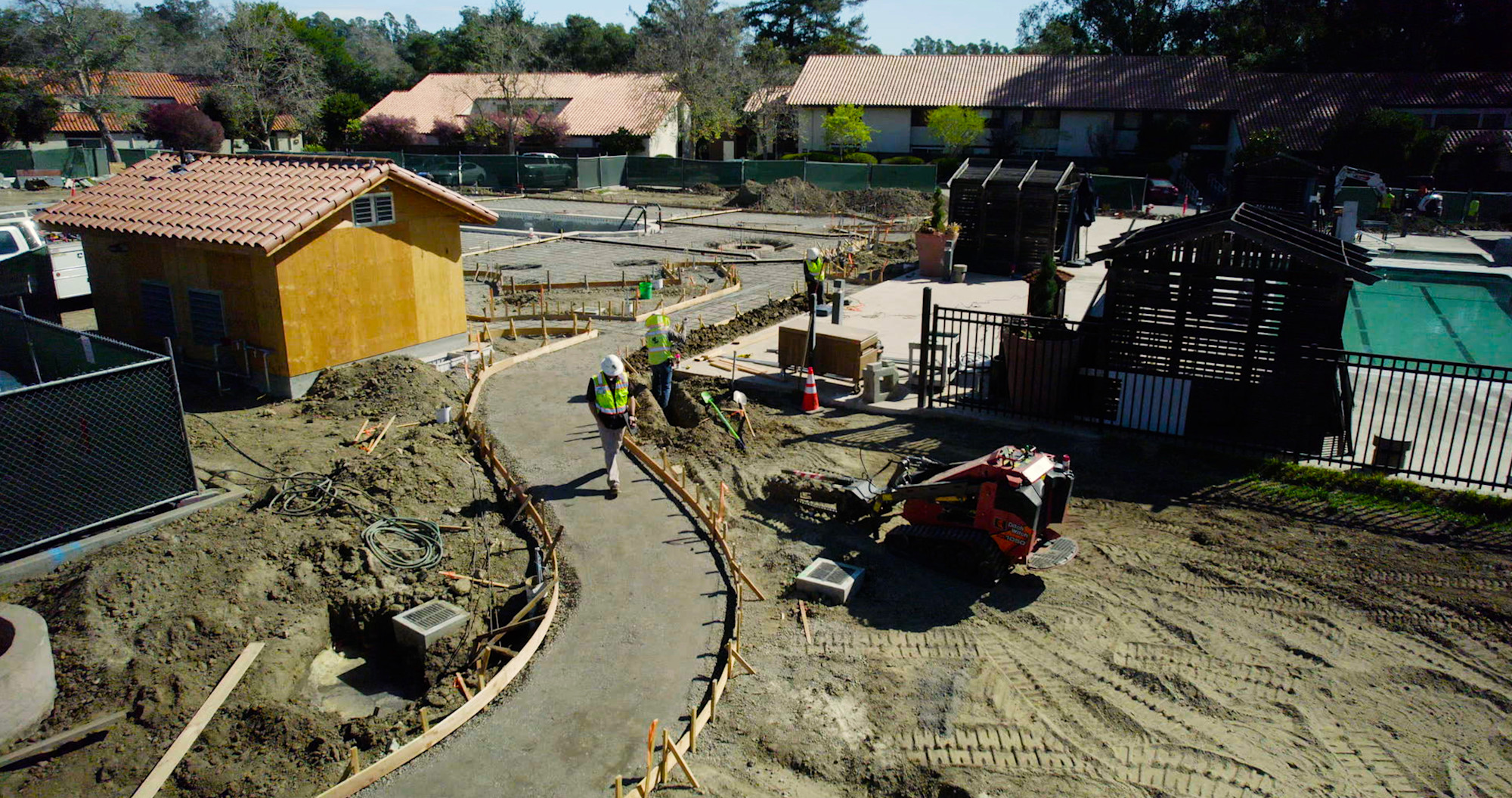Table of Contents
Table of Contents
- Operational consistency is essential to price landscaping jobs profitably
- Understand your landscaping service clients’ needs
- Landscaping project variables are subject to change
- Material costs
- Landscaping business management software empowers accurate, consistent job costing
- Creating a landscaping job quote
- Improving your process to price landscaping jobs
- Deliver better estimates for landscaping work with Aspire
Pricing in the service trades is always a balancing act. Of course, you want to be competitive to win more business, but all that business has to be profitable to the bottom line. Pricing is an art of the craft in the world of landscaping, and often:
Inconsistent
Inaccurate
Without actual job costing visibility
Without consideration of job performance history
When done right, your pricing strategy can secure long-term business, increase margins, and demonstrate the quality of your work. But achieving all three of those can be a struggle for new companies.
Operational consistency is essential to price landscaping jobs profitably
Understanding how to price your services and provide accurate quotes is vital to growing your landscaping business. While experience plays a role in figuring out your pricing, you need to have a system behind your methodology.
When multiple team members work in different roles creating estimates, it creates inconsistent and inaccurate pricing that fails to account for the following:
Verified production costs
Direct and indirect costs
Markups to achieve the desired profit margin
→ Developing a system to establish prices is key.
It’s time to assess how you put together estimates and proposals if:
You rely the most on your personal knowledge of pricing in the marketplace
Your staff often performs a copy/paste job from the last and most similar job you performed
You struggle to achieve budgeted profit margins
There are inconsistencies between estimates and invoices
It’s hard to find the balance between competitive and profitable prices for landscaping jobs
If you recognize yourself in these issues, you need an easy-to-use system for building and delivering consistent quotes across your services from estimate to invoice.
This blog will help you identify your price and estimating system needs and how you can implement a process suited to your business’s needs.
Understand your landscaping service clients’ needs
The client is king. Your pricing journey should begin with your business’s ability to address unique customer needs. But as you know, every customer is different, meaning different:
Requests
Obstacles
Services
Requirements
Just because client requests may vary doesn’t mean your quotes should have inconsistencies.
Start every estimate with a job site audit
Inspections reveal how much work will go into any request.
→ Even for identical landscaping services, like weekly mowing, a small residential customer won’t pay the same fee as a commercial enterprise customer like a shopping mall.
While that’s an easy distinction from your end, how would you explain this discrepancy to a customer?
When it comes to adjusting prices for each client’s needs, you have to be prepared to evaluate job sites in terms of how different aspects affect labor and material costs, such as:
Location
Takeoff measurements of square footage
Type of soil
Site conditions and hazards
Weather
Appropriate equipment
Additions and removals
Each of these on-site factors plays a role in how you quote clients for their specific requests.
Include potential clients in the walkthrough when you estimate landscaping jobs
The in-person walkthrough lets your team review the property with potential customers. This step improves communication and saves time by:
Addressing any possible concerns proactively
Pointing out trouble areas that might require additional attention
Building a client-business relationship on a foundation of communication
You can also reduce the number of curveballs affecting final billing later.
→ An optimized quoting system should have key takeoff measurements documented in a shared system.
This way, when it comes time to inspect a new site, your team isn’t just eyeballing potential issues to ballpark costs. Instead, your landscaping company will have a curated list of variables that will translate into pricing.
Implement software to eliminate the frequency of on-site visits during estimates
For busy customers who don’t want to take time out of their day for an in-person walkthrough, virtual measuring and takeoff software enables landscapers to use digital tools to generate takeoffs for:
Maintenance contracts
Design-build projects
Enhancements
With an integrated system, landscapers can edge out the competition on every job they bid by:
Working faster: Eliminate in-person walk-throughs and be the first to the table with your estimate
Delivering accuracy and precision: ensure better customer experiences with precise, consistent estimates built with accurate measurements
Automating processes: PropertyIntel generates cost estimates while you measure for:
Labor production needs
Materials amounts
Material costs
Users bring measuring and estimating into a single step without the need for error-prone manual data entry.
Software recreates the in-person walk-through experience with minimal interruption to the prospect’s day and without sending a team member onsite.
Innovations in technology and software enable your team to do more with their day. While a virtual walkthrough won’t meet the needs of every property, when possible, they can streamline and accelerate the estimate process.
Landscaping project variables are subject to change
Getting your measuring system in place creates a foundation for accurately, consistently estimating unique variables that exist beyond the property of a new contract, such as:
Those that change seasonally
Those impacted by current crew counts
Those tied to logistics
Landscaping companies that create consistency across variables are the most set up for growth. With a robust strategy behind your pricing process, you can:
Pivot as needed
Expand into new regions or markets
Add to your service offerings with ease.
But what does it take to get there? Here are some must-know variables.
Labor costs
Estimating the labor needed for a landscaping job is essential but no less of a struggle. Accuracy requires an analysis of your current staffing and capabilities. Every company will vary by how much they pay their employees.
→ Retaining talent is just as vital to saving on costs as cutting back on pay.
Your cost per employee should account for these key variables:
✓ Hourly wages
✓ Burden costs
✓ Markups for overhead
✓ Market rates
At the core of labor cost will be how much you spend on your crew for each job. The formula for establishing those costs should look like this:
Crew count (hourly wage + burden x time required) = cost
For example:
A job requires three crew members
Each crew member is paid $20 an hour + 22% burden = $24.40 per hour
The job will take 80 hours
→ Plug into the formula: 3($24.40 per hour x 80 hours) = $5,856 in costs.
Overhead costs in pricing labor
Your labor costs might seem pretty straightforward from a crew management angle, but that’s only part of the equation.
Other variables create reductions or additions in labor costs, and each should be weighed to optimize your overall margins.
Consider these additional variables:
Windshield time
Equipment costs
Crew efficiency
Consider our equation from earlier. Say that same job included a lawn care maintenance service. Equipment can impact the number of hours on the job:
80 hours: three crew members with hand-push 21-inch lawnmowers
vs
70 hours: three crew members with 48-inch riding lawnmowers
Of course, you have to factor in how much it’ll cost to transport and maintain the equipment properly.
→ Riding mowers might reduce 10 hours of cost on a lawn care service such as mowing but require $500 in gas and additional trailers for transport.
The formula might begin to grow to something more akin to:
(Crew count x hourly wage + burden) x (time required - equipment time reductions) + equipment maintenance usage fees = cost
When you incorporate equipment costs into the previous example, you get the following:
Overall hourly wages of $73.20 on a 70-hour job = $5,120 spent on crew
Additional equipment fees run you out to $500
The total cost comes to $5,620—$236 in savings from our original equation, which is pretty substantial in an industry with razor-thin margins.
This is only one example; your business model may have an entirely different set of variables.
Documenting the cost of landscaping work is essential to accurate estimates
If you discover scheduling fewer hours but with larger equipment will save you on costs, it’s a huge win for your margins. This is why you want:
A well-documented list of equipment cost
Overhead costs from deploying equipment
The cost of deploying equipment
Costs for upkeep, routine maintenance, and equipment repair
Adding these factors to your equation will help optimize your margins for each job.
Total labor costs include lost opportunities
It’s also vital to consider how having all your crew tied in jobs for a certain time period might cost you in the long run.
If you’ve committed to your team to 80 labor hours over two weeks, you won’t be able to accept new opportunities that might be more cost-efficient.
Not to mention what could happen if one crew member calls in sick and you have no one else to pick up the slack.
Material costs
The last aspect of any job you need to be ready to measure is the cost of materials and supplies. This will have a lot of impact on the type of services you're able to offer.
Losing a potential customer because of making estimate errors due to unfamiliar materials and uncertainty in your production factors can damage your brand reputation.
Understanding material costs can fuel growth
Pricing supplies is never a fun challenge. The truth is you’re likely not sourcing materials internally. Landscapers rely on vendors and suppliers to get the range of materials they need to provide an inclusive package of services.
Some businesses limit their scope of work to minimize the range of materials they need, but this leaves them unable to pivot, minimizes their ability to find new niches, and limits their growth trajectories.
These materials could include things such as:
Soil
Mulch
Gravel
Paving equipment
Wood
Metals
Woody plants
Shrubs such as annuals and perennials
Garden features
Recycled materials
And that’s just a short list.
A trusted network of suppliers helps landscapers charge consistent, competitive prices.
To accurately cost materials, you will need an established list of reliable vendors. Not just one per supply type, but multiple in case of shortages or if you need a backup during the busy season.
Once you know your vendors, you have to understand how their pricing works.
You don’t want to learn the hard way about:
Hike-ups during busy seasons
Limitations during off seasons
Other curveballs that affect your customer service
Delivery limitations
Unexpected fees
Once you have vendor pricing figures worked out, you can enter them into an adaptive costing sheet. By implementing a software platform into this process, you can ensure material prices are current with an online catalog integration to provide daily pricing updates. When a job requires a certain amount of supplies, any team member can plug in the amount and get instant, accurate costs.
An organization-wide system for the cost of materials gives owners and managers a live look into how much a job will set you back on supplies.
Landscaping business management software empowers accurate, consistent job costing
Aspire’s platform allows you to curate supply and material lists and plug them into customized estimate templates.
Your supply fulfillment team can update your pricing system with vendor costs, and your estimators can get live feedback as they build out estimate templates.
With Aspire, managers have greater insight into potential scheduling timelines because estimates tap into current inventory and stock.
Always know what supplies are ready to go and what will need to be ordered
Eliminate costly downtime from crews waiting on supplies
Prevent eroding margins from last-minute retail shopping for missing materials
But the cost of supplies isn’t the cost customers pay—a company would barely break even, let alone be profitable.
So what do you charge the customer? It comes down to your markups.
Add your markup to calculate the total price
As a business owner, you want to do two things:
Manage costs
Perform profitably
Many entrepreneurs struggle with this juggling act. Investing in finding the right balance goes a long way toward your big-picture goals.
The final price you charge customers should keep you aligned with the budgeted overhead costs of every landscaping job.
Unfortunately, profitability for landscapers doesn’t come down to simply charging customers the national average or what they pay vendors. It’s not sustainable to set prices based on external variables from your business.
→ Markups are based on covering overhead costs in every division of a business.
So, how do you decide on a proper markup?
You have to use business analysis to know if your estimate is:
Labor heavy
Material heavy
Subcontractor heavy
Understanding your costs on this granular level will dictate your markups per service and therefore, your profitability.
What variables would allow a service to keep markups lower?
If the service is for smaller jobs: You won’t have to put in large orders to maintain inventory if the service doesn’t require many supplies.
If they’re frequently occurring services: The landscaping maintenance services you do most often will be easy to source materials for since you’ll always want a steady flow of supplies ready to go.
If it’s the season for that supply: Once a material becomes in demand, it should be easy to source and regular enough to lower pricing.
You can always work towards lower markups by building better relationships with vendors or signing long-term contracts for customers needing repeated services.
→ Increasing markups is hard to explain to existing customers if it’s not an industry-wide practice.
Creating a landscaping job quote
Once you have everything measured and ready to cost out, you can start building your quotes.
Be prepared to have your quote documented internally and externally, covering the measuring keys highlighted earlier.
Your pricing system should have a shared location with each key measured to translate directly to your estimator team.
The process should look something like this:
Documented labor costs
Overhead fees calculated and documented
Supply fees are costed out for each season and documented
Your estimator uses your custom templates to cost out the requirements for your teams
The estimate gets reviewed internally to analyze the job profitability
Once approved, an external quote is documented, covering required service charges and additional fees
The quote is created and sent to the customer
The quote is used to create an invoice with any additional charges that arise once the job is completed
That is an optimized workflow for accurately building out quotes throughout your organization.
Empower staff with the right tools
This methodology allows your staff to focus on their area of expertise. Using a centralized platform also makes it easy for any role to step in and fill out a consistent quote–all with visibility throughout the process.
→ Aspire’s estimating software is a shared platform that pulls all these moving parts together.
No one has to chase down the information they need to compile a quote. The software ensures everyone—within a sales team or across regional branches–builds quotes consistently using pre-built and internally stored templates and kits. The system does the work for you.
Estimators simply add:
Documented services
Priced supplies
Then, the platform adds up the costs while showing the gross margin.
A streamlined and easy-to-use process is the only way to ensure quality quotes without micromanaging or additional oversight. A shared system like Aspire’s cloud-based software is the key to empowering every piece of your workforce to put out quality quotes every time.
Improving your process to price landscaping jobs
After your new system is set, it’s important to keep in mind the task ahead. A sustainable approach for building out quotes is great for:
Accuracy
Consistency
Client communication
But there’s one more area of impact.
A repeatable process and easy-to-manage quoting system mean easy-to-access data. With everything documented, it’s simple to analyze how slim or wide your margins are for each job.
Your system should also account for tracking each new quote as you receive it. If you’re getting job requests you have to turn down cause costs are too high, follow that as well.
Adopt data-driven decision-making into your landscaping business’s work processes.
Your quote history can help with huge decisions:
When to invest in new equipment
The right time to ramp up hiring
Expansion into new areas, niches, or verticals
With the right insight, you can make moves and pivot to help you decrease costs or make pricing updates in the right areas.
Your quote data can even help you make adjustments to your pricing model.
Choosing your landscaping services pricing model
After you’ve built up your costing data, it becomes time to decide if your pricing model works for your business. This type of decision can be based on a few things.
Competitive landscape
Regional needs
Most frequent customer type
There are two main pricing models to consider in landscaping, and making the right choice will determine your ability to scale your landscaping business.
Hourly pricing model
An hourly rate model is pretty standard and sometimes the easiest to manage, depending on your work.
→ If a majority of your costs come from labor, it’s easier to track customers by the duration of each job.
Benefits of using the hourly rate model
Hourly can be great for scrappy teams that appreciate the additional wiggle room the model affords. This method for pricing landscaping work can help clients understand why complex jobs will cost more and set expectations early on.
It’s also easy to manage your team since everything comes down to crew counts and hourly availability.
Downsides to the hourly pricing model
Issues can arise with this model as well. The nature of an hourly model means no enticement for workers to move ahead of schedule or work faster.
Customers can be skeptical if they feel your team is working slowly. It can also strain customer relationships when things take longer than expected, and the schedule runs over the original deadline.
Enact company policies to combat potential issues
Overestimate time: This can result in many jobs being completed ahead of schedule to increase customer satisfaction and provide wiggle room for those past deadline finishes.But consider competitor time estimates, as you don’t want to appear slower than alternative options.
Address late work: If you have a set policy about work that runs over schedule, it will help customer satisfaction remain positive if things take too long.Consider a policy around no additional fees for late jobs–teams will be incentivized to complete work on time but missed deadlines can be costly.
Fixed pricing model
A fixed-rate model can be a much simpler process for your crew and customers but may leave less room for growth in how you charge for services.
Benefits of the fixed-rate model
This model works by increasing your ability to let customers feel more in control to minimize concerns. Your short-term bottom line also benefits since you can charge directly for the value of work which means a higher set price.
→ If your business becomes more time-efficient with talented and experienced crews, or improved equipment, you won’t lose out on those costs later.
There are still variables in charges with fixed billing. Consider curating different landscaping service packages based on customer needs. Your rate for lawn maintenance and mowing should still have a multiplier based on square feet or complexity.
Seasonal multiplies are also a strategy for adjusting to the varying costs of supplies and materials.
Downsides of this pricing model
Concerns arise in the possibility of unknown obstacles. If you underestimate, it can be hard to explain to a customer why you can’t take on a job or, worse, why you need to add additional charges.
Using this method of pricing also makes it hard to expand. Tapping into unknown markets or new offerings will be hard to manage using rates based on previous experience.
Suggested strategies for fixed-price models
Perform a walk-through with the customer: Both your team and the client must address all possible concerns before signing on for a job. This way, your team can proactively prepare for unexpected cost increases and work them out with the customer.
Have a policy around multipliers: Variables still exist in a fixed-rate business. Homeowners need to understand why they’re getting charged less or more than a previous customer. Have your multipliers built into your quoting system, so unexpected costs don’t run you down.
Deliver better estimates for landscaping work with Aspire
Manual quoting and pricing models are holding landscaping businesses back. Many high-growth companies are discovering the value of a software tool that can help them manage costs and get quotes out quicker.
If you want to glimpse what this process could look like for your business, download one of our free proposal templates.
Do more with less by implementing a business management platform built for landscapers
When you’re ready to invest in landscaping software designed to make winning bids with quick and accurate quotes easy, consider Aspire.
Our cloud-based platform connects your teams and processes to empower everyone to do their job efficiently. Use our free, easy ROI calculator to see how you can improve your bottom line by implementing Aspire, then schedule a demonstration and take your pricing to the next level.






